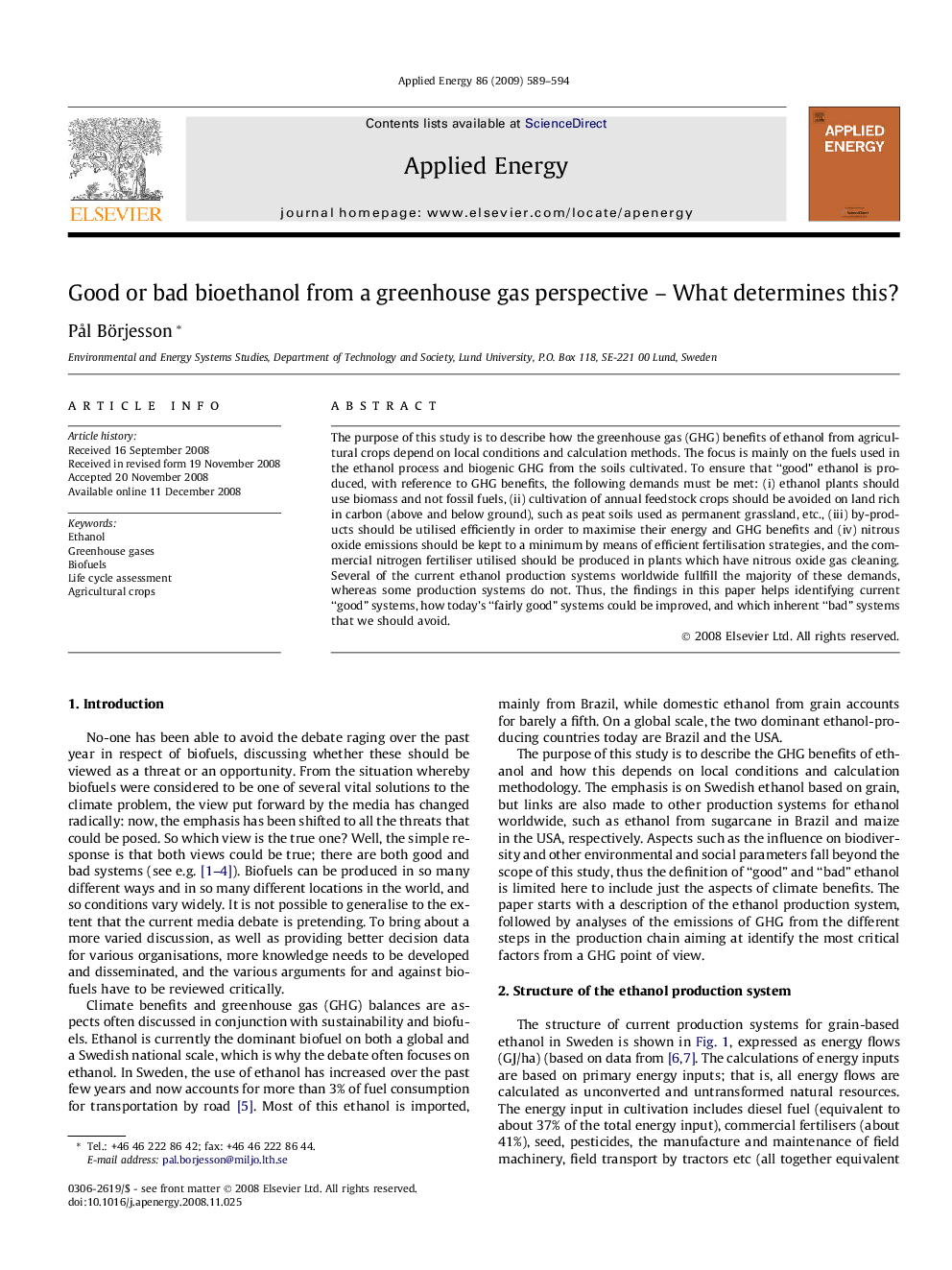| کد مقاله | کد نشریه | سال انتشار | مقاله انگلیسی | نسخه تمام متن |
|---|---|---|---|---|
| 245144 | 501973 | 2009 | 6 صفحه PDF | دانلود رایگان |

The purpose of this study is to describe how the greenhouse gas (GHG) benefits of ethanol from agricultural crops depend on local conditions and calculation methods. The focus is mainly on the fuels used in the ethanol process and biogenic GHG from the soils cultivated. To ensure that “good” ethanol is produced, with reference to GHG benefits, the following demands must be met: (i) ethanol plants should use biomass and not fossil fuels, (ii) cultivation of annual feedstock crops should be avoided on land rich in carbon (above and below ground), such as peat soils used as permanent grassland, etc., (iii) by-products should be utilised efficiently in order to maximise their energy and GHG benefits and (iv) nitrous oxide emissions should be kept to a minimum by means of efficient fertilisation strategies, and the commercial nitrogen fertiliser utilised should be produced in plants which have nitrous oxide gas cleaning. Several of the current ethanol production systems worldwide fullfill the majority of these demands, whereas some production systems do not. Thus, the findings in this paper helps identifying current “good” systems, how today’s “fairly good” systems could be improved, and which inherent “bad” systems that we should avoid.
Journal: Applied Energy - Volume 86, Issue 5, May 2009, Pages 589–594